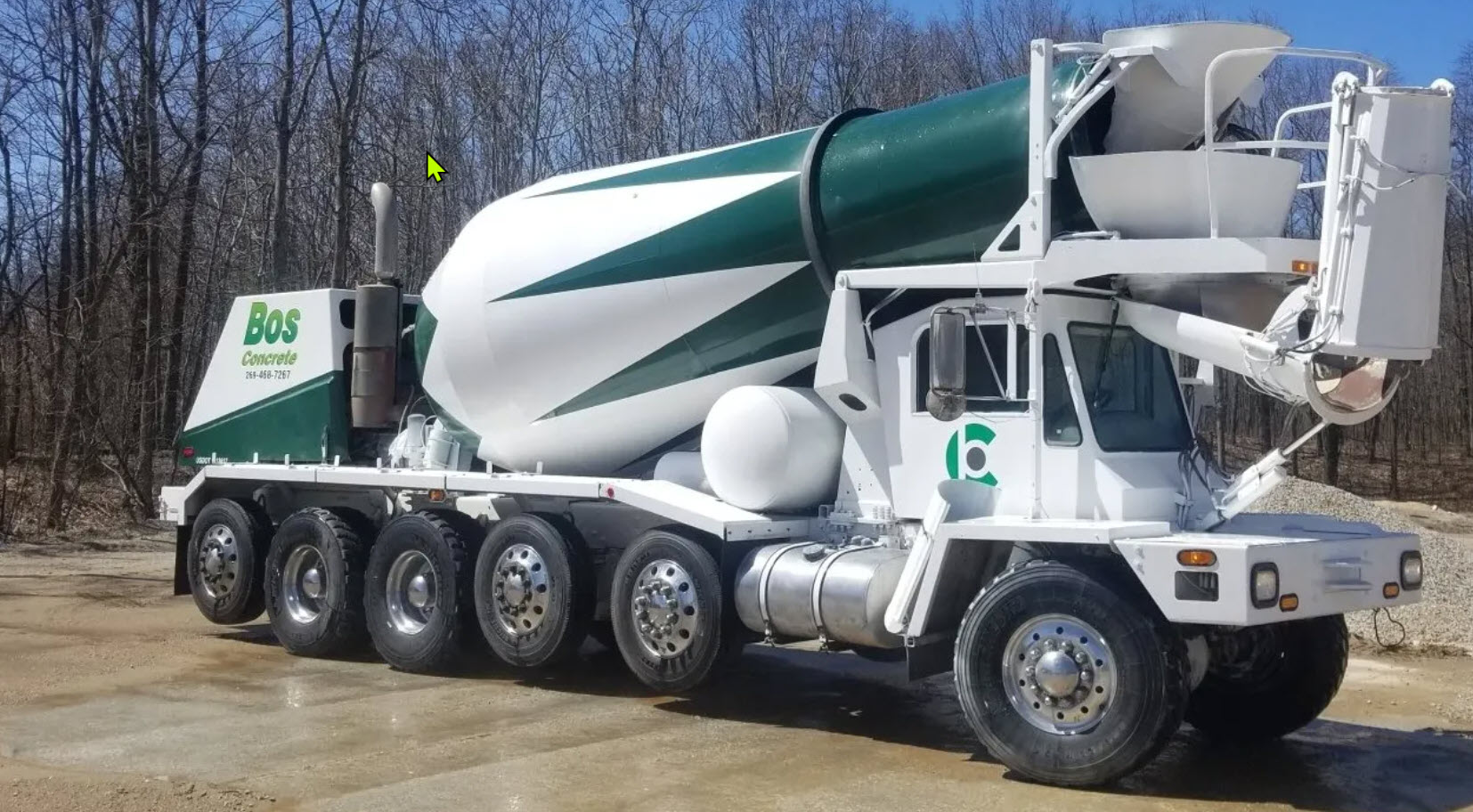Ensuring the safety of truck tires is paramount for any fleet management operation, as it directly impacts the vehicle’s performance, fuel efficiency, and overall safety on the road. Regular truck tire safety inspections are not only a best practice but a necessity to avoid unfortunate incidents and costly breakdowns. This article will guide you through essential tips for conducting a thorough truck tire safety inspection, helping you maintain optimal tire conditions and ensuring the well-being of your fleet.
At Fuel & Tire Saver Systems Company, LLC, we specialize in mobile onsite nitrogen tire inflation across Virginia, Maryland, Pennsylvania, North Carolina, Tennessee, and Georgia. Our expert team visits truck fleets to inspect and inflate tires, saving fuel, extending tire life, and enhancing road safety. Interested in maximizing your fleet’s efficiency and safety? Request Fleet Pricing, contact our office at (703) 429-0382, or email Mike.LoPresti@fuelandtiresaver.com.
Table of Contents
ToggleImportance of Regular Tire Inspections

Regular tire inspections are crucial for maintaining the safety and efficiency of your truck fleet. The significance of these inspections cannot be overstated, as they play a vital role in preventing tire-related accidents and ensuring the optimal performance of your trucks. By routinely checking tire conditions, you can identify potential issues before they become serious problems, thereby avoiding unexpected breakdowns and costly repairs.
One of the primary benefits of regular truck tire safety inspections is the ability to monitor tire pressure. Proper tire inflation is essential for fuel efficiency, as under-inflated or over-inflated tires can lead to increased fuel consumption. Additionally, maintaining the correct tire pressure helps extend the lifespan of your tires, reducing the need for frequent replacements and saving your business money in the long run.
Furthermore, regular inspections allow you to check for signs of wear and tear, such as uneven tread wear, cuts, or punctures. Identifying these issues early on can prevent dangerous blowouts and ensure that your trucks remain safe on the road. Consistent tire maintenance also contributes to a smoother ride, improving overall driver comfort and reducing vehicle stress.
In summary, the importance of regular tire inspections cannot be ignored. By prioritizing these routine checks, you can enhance the safety, efficiency, and longevity of your truck fleet, ultimately benefiting your business and the environment.
Key Steps for a Thorough Inspection
.png)
Conducting a thorough truck tire safety inspection involves several key steps that ensure no aspect of the tire’s condition is overlooked. Following these steps meticulously can help maintain the safety and efficiency of your fleet.
1. Check Tire Pressure: Use a reliable tire pressure gauge to measure the pressure of each tire. Refer to the manufacturer’s recommended pressure levels and adjust accordingly. Proper inflation is crucial for fuel efficiency and tire longevity.
2. Inspect Tread Depth: Measure the tread depth using a tread depth gauge. Tires with insufficient tread can compromise traction, especially in wet conditions. Ensure that the tread depth meets the legal requirements and replace tires that are excessively worn.
3. Look for Visible Damage: Examine the tires for any visible signs of damage such as cuts, cracks, or punctures. Pay close attention to the sidewalls and tread areas. Damage can lead to sudden tire failure, so it’s essential to address any issues promptly.
4. Check for Uneven Wear: Uneven tire wear can indicate alignment issues or improper tire pressure. Rotate the tires regularly to promote even wear and inspect the vehicle’s alignment if you notice any irregularities.
5. Inspect Valve Stems and Caps: Ensure that valve stems are in good condition and free from cracks. Valve caps should be securely in place to protect the valve from dirt and moisture.
6. Monitor Tire Age: Even if the tires appear to be in good condition, it is crucial to monitor their age. Tires older than six years should be inspected more frequently and considered for replacement, as the rubber can deteriorate over time.
By diligently following these key steps, you can conduct a comprehensive tire inspection that enhances the safety and performance of your trucks. Regular inspections not only prevent unexpected breakdowns but also contribute to a more efficient and cost-effective fleet operation.
Common Tire Issues and Solutions
During a truck tire safety inspection, it’s crucial to be aware of common tire issues that can compromise the safety and efficiency of your fleet. Understanding these problems and their solutions can help you address them proactively.
1. Underinflation: One of the most common issues is underinflated tires. Underinflation increases rolling resistance, leading to higher fuel consumption and uneven tire wear. The solution is to regularly check and maintain proper tire pressure according to the manufacturer’s specifications.
2. Overinflation: Overinflated tires can be just as problematic, causing reduced traction, a harsher ride, and increased wear in the center of the tread. To avoid this, always use a reliable tire gauge and adjust the pressure to the recommended levels.
3. Tread Wear: Uneven tire wear can result from misalignment, improper inflation, or suspension problems. Regularly rotating tires and ensuring proper alignment can mitigate this issue.
4. Sidewall Damage: Cuts, cracks, or bulges in the sidewall can indicate tire damage that may lead to blowouts. Inspect the sidewalls frequently and replace any tires showing signs of significant damage.
5. Punctures and Leaks: Small punctures and slow leaks can often be repaired if caught early. Use a tire sealant or have the tire professionally patched to extend its life.
6. Tire Aging: Over time, the rubber in tires degrades, even if the tread seems adequate. Inspect the age of your tires and replace them if they are older than six years to avoid the risks associated with aged rubber.
7. Flat Spots: Flat spots can develop when a truck is parked for extended periods. To prevent this, move the truck periodically or use tire covers to distribute weight more evenly.
By identifying and addressing these common tire issues, you can maintain a safer and more efficient fleet. Regular inspections and timely maintenance not only enhance road safety but also contribute to cost savings by extending tire life and improving fuel efficiency.
Benefits of Nitrogen Tire Inflation

Switching to nitrogen tire inflation offers numerous advantages over traditional air inflation, and these benefits can be especially significant for truck fleets. Here are some key reasons to consider nitrogen for your tires:
1. Improved Tire Pressure Retention: Nitrogen molecules are larger than oxygen molecules, which means they escape more slowly through the rubber of the tire. This results in more stable and consistent tire pressure over time, reducing the need for frequent top-offs.
2. Enhanced Fuel Efficiency: Maintaining optimal tire pressure with nitrogen can lead to improved fuel efficiency. Properly inflated tires have lower rolling resistance, which means your trucks use less fuel, leading to cost savings and reduced environmental impact.
3. Extended Tire Life: Nitrogen inflation helps to minimize oxidation and moisture within the tire, which can deteriorate the rubber and steel components. By reducing these damaging effects, nitrogen can extend the lifespan of your tires, providing a better return on investment.
4. Increased Safety: Consistent tire pressure ensures better handling and stability, reducing the risk of blowouts and other tire-related accidents. This is particularly important for heavy trucks, where tire failure can have serious consequences.
5. Reduced Oxidation: Oxygen in compressed air can cause oxidation of the tire material, leading to premature aging and weakening of the tire structure. Nitrogen, being an inert gas, reduces this oxidation process, preserving the tire’s integrity.
6. Cooler Running Temperatures: Tires inflated with nitrogen tend to run cooler than those filled with compressed air. Lower running temperatures reduce the risk of overheating and blowouts, especially during long hauls and in hot weather conditions.
7. Environmental Benefits: By improving fuel efficiency and extending tire life, nitrogen inflation contributes to lower carbon emissions and less waste, supporting environmental sustainability efforts.
Adopting nitrogen tire inflation for your truck fleet not only offers tangible performance and safety benefits but also supports long-term cost savings and environmental goals. Investing in this technology can enhance the overall efficiency and reliability of your fleet operations.
Environmental Impact of Proper Tire Maintenance

Proper tire maintenance is not only crucial for the safety and efficiency of your truck fleet, but it also has a significant positive impact on the environment. Here are a few ways regular tire maintenance contributes to environmental sustainability:
1. Reduced Fuel Consumption: Ensuring that your tires are properly inflated can lead to better fuel efficiency. Under-inflated tires create more rolling resistance, which means your trucks need to burn more fuel to maintain the same speed. By keeping your tires at the optimal pressure, you can minimize fuel consumption and reduce greenhouse gas emissions.
2. Extended Tire Life: Regular inspections and maintenance help to detect and address issues such as uneven wear, punctures, and damage. By extending the lifespan of your tires, you reduce the frequency of tire replacements, which in turn decreases the demand for raw materials and energy required for manufacturing new tires.
3. Less Waste: Proper tire maintenance helps to prevent premature tire disposal. Tires that are well-maintained and last longer contribute to less waste being sent to landfills. This reduction in waste supports environmental conservation efforts and helps to mitigate the environmental impact of tire disposal.
4. Lower Carbon Footprint: By improving fuel efficiency and extending tire life, proper tire maintenance directly contributes to a lower carbon footprint. Truck fleets that prioritize tire care can significantly reduce their overall environmental impact, aligning with global sustainability goals.
5. Reduced Pollution: Properly maintained tires are less likely to fail and cause accidents, which can lead to hazardous spills or emissions. By reducing the risk of tire-related incidents, you can help to minimize pollution and promote safer, cleaner roads.
Incorporating regular tire maintenance into your fleet management practices is a win-win situation. It enhances the safety and performance of your trucks while also playing a vital role in protecting the environment. If you’re ready to make a positive change, Request Fleet Pricing, Contact our office at (703) 429-0382, or email Mike.LoPresti@fuelandtiresaver.com to learn more about how our nitrogen tire inflation services can benefit your fleet.


